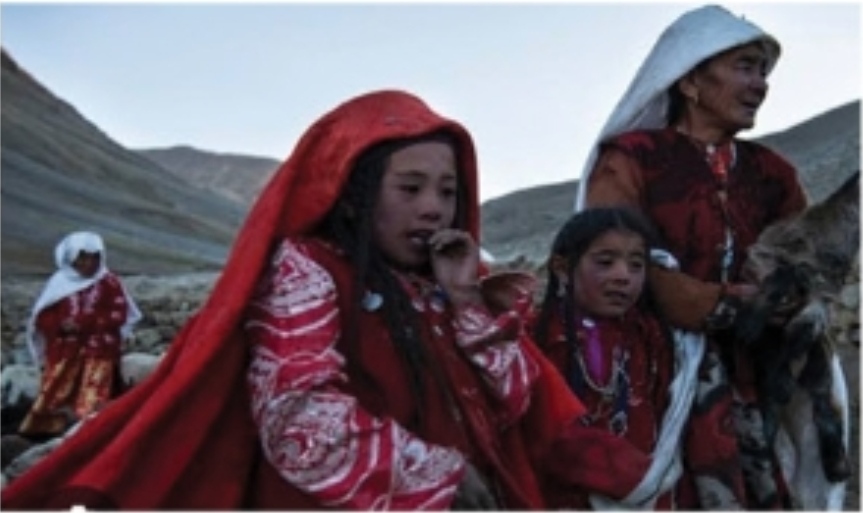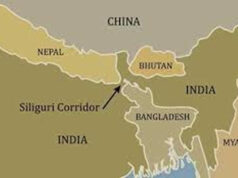Fading into Oblivion: The Daring Wakhi Sheperdesses of Gilgit Baltisthan

“Nothing adventured, nothing gained” Peter MacWilliams

By Colonel Satish Singh Lalotra
It is always a gospel truth that confluences of human civilizations with that of physicality of diverse regions in the world are a melting cauldron of diverse people & places that bring along with them centuries of embedded ideas &beliefs only to transcend these physicality of problems.
Often these trends are seen and observed to transcend various nations &their boundaries making them a continuous tapestry of an extended chain of mankind.
The Central Asian land mass that has at its northern extremity countries like Kazakhstan and southern boundary extending across the famous Wakhan corridor’ right into Gilgit Baltisthan could very well fall into this broad category of “Bridges of mankind’.
With the overlapping of customs, traditions and such like beliefs finding preponderance in the region of central Asia, the traditional boundaries amongst the member countries of ‘Central Asia’ seem to blur. One such community that has been at the forefront of etching ‘Bridges of commonality’ amongst the member countries of this Asian landmass has been the `Wakhi’.
Living literally on the roof of the world or the Tam-i-Duniya’ these wanderers of central Asia generally thrive in the famous Wakhan corridor’ that narrow sliver of land which separated the British Empire from `Tsarist Russia’ in the days of the ‘Great game’.
Also called the `Khik’, at present their footprints extend from the present day ‘Gilgit Baltisthan’ of the erstwhile `Northern areas’ ofPakistan right till Chitral in Khyber Pakhtunwa,Tajikistan across the Pamirs, Southern Xinijiang in China, some in Russia and even a few odd Wakhi villages in Turkey.
For centuries these Wakhi tribe people have been bee lining to remote mountain pastures to graze their flocks. The income thus generated has been pivotal in transforming their community, helping to pay for health care, education, and the first rod out of their valley.
The `Wakhan’ sits at the junction of the Hindu kush, the Himalayas/Karakorums, and the Pamirs—what is called as the famous ‘Pamir knot’. The valley is carved by the Wakhan River, fed by glacial melt water from the surrounding mountains. The Wakhi are a Persian people as such of Tajik ancestry and speak Wakhi language.
This is an Indo-European language of the Iranian branch of language family, distantly related to Persian Tajiks and are Ismailis that is a progressive branch of Shia Islam that eschews many conventional Muslim practices.
They do not fast during the ‘Ramadan’ for example which is uncommon elsewhere in the Muslim world. The Wakhi practice combined mountain agriculture, growing wheat, barley, potatoes, beans, and peas in their small farm lands plus herding their yaks, sheep and goats to high altitude pastures above 4000 meters during the summer season.
It is here that the Wakhi shepherdesses come into action and are the last of the true harbingers of spreading their Wakhi culture often transcending fearful odds of Gilgit Baltisthan journeying deep into the heartland of Pamir pastures.
These women whistle and holler at the sheep, goats and the yaks to stop them from straying from the narrow paths and falling down the mountainside. In the years gone by, every summer dozens of Wakhi shepherdesses would make this arduous trek through the rugged Karakorum Mountains of East Pakistan. Carrying their children on their backs, they would leave men at home to farm in the Shimshal’ valley below.
As per the information of a BBC team that happened to visit this remote locality of Gilgit Baltishtan only a handful of such daring shepherdesses are now left to take the legacy of Wakhi culture across the glacial wasteland of Gilgit Baltisthan into the heart land of Central Asia. These daring women used to walk 8 hours a day through rain, snow and scorching heat that now lies etched in lines Photos crossing their faces.
The journey used to take those about 3 days to hit the pastures of Wakhan corridor. The elderly shepherdesses used to be generally much ahead of the younger ones owing to a much better acclimatization of the terrain.
As per the tales of these daring women the thuds of the goats and sheep used to vibrate the ground around leading to crashing of rocks and dust on to them. It was even harder in the past, before these women of high-altitude had thermal jackets and walking shoes.
The shepherdesses earlier used to wear simple robes, were mostly shoeless and walk into the ice with bare minimum footwear. But when having once crossed the high lands of Gilgit Balisthan and ascended to about 5000 meters (16,000 feet), the very sight of lush green pastures and glacial streams of shimmering water of the Pamir used to absorb all their fatigue and enthuse them with the much required adrenaline to partake into all the activities that were waiting for them all along.
They exclaim with childlike spontaneity that these lands have been a witness to countless families consisting of mothers and grandmothers walking these inhospitable expanses from times immemorial churning butter and making yoghurt.
The plant of ‘Spandur’ was one such panacea that alleviated their all pains. For these hardy `Wakhi’ women the area reeks of personal tragedies too. With little or no medical cover or healthcare facilities it was a litany of woes and tragedies that befell the families and children of these `Wakhi’ communities. But then over the years, the shepherdesses became successful businesswomen.
Having made many cooperatives of milk yielding animals these women have now been able to take their dairy products far and wide with good remuneration to boot. The combination of women’s shepherding and the men’s farming in the `Shimshal valley’ of Gilgit Baltisthan has brought a total transformation in the entire community of this Wakhi population.
The community till as late as 2000 i.e. about 23 years ago was disconnected from the rest of the world. But their hard work, fortitude and a never say die attitude pulled them out of this morass of hopelessness and inertia.
They have been able to fund the only road out of the `Shimshal valley’ linking the village of theirs to the KKH (Karakorum highway) which runs between China and Pakistan. The new generations of Wakhis have now ventured into new fields of living armed with degrees of medicine, engineering and such like thus breaking the endless cycle of hard ships and extreme fortitude. Gone are the days when trade caravans and pilgrims from eastern Turkistan used to cross over the aurambar Borog hill and Darwaza passes into Chitral and vice versa for permanent settlement.
But yes even today the `Dar open drum and flute plus Rabab can be heard in the upper reaches of Gilgit Baltisthan thus conveying that though the marches of modern time and tide have seeped into the very sinews of these Wakhi people alienating much of them from their traditional beliefs, somewhere there are threads of commonality in the form of traditional Wakhi dance and music that binds them to their age old traditions. As Peter McWilliams has rightly saidNothing adventured is nothing gained.’
(The writer is a retired army officer and can be approached on his email: slalotra4729(q gmail.com)




